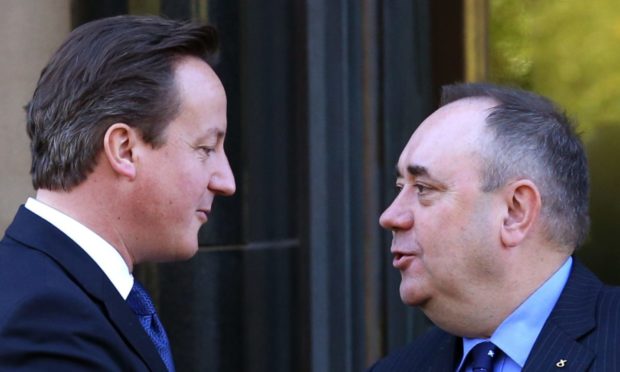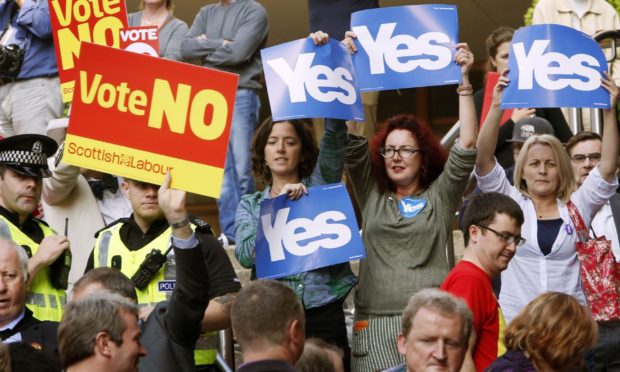Former SNP leader Alex Salmond admits he hoped UK Government refusal for a formal currency union in 2014 would stir up a pro-independence backlash – but he “underrated the Scottish cringe”.
Speaking to supporters online on Saturday, Mr Salmond revealed his view of the public reaction as he lifted the lid on a political gamble against George Osborne, who was Chancellor in David Cameron’s Conservative government at Westminster.
Currency miscalculation
“It was a mistake, not necessarily to advocate a currency union, but to advocate it in the way I did back in 2012-2013,” Mr Salmond explained.
He said it was “possibly” the best policy idea at the time, but added: “It allowed Osborne to say no.
“My calculation was that George Osborne saying no to the Scots would be beneficial to us.
“In fact, I underrated the Scottish cringe.
“George Osborne saying no to the Scots, yes of course people got annoyed about it, but of course secretly thought: ‘Oh my god, we’re not going to be allowed to use the currency now, oh dear, dear, dear.’”
That problem took up time to explain in the campaign, he added.
Mr Salmond said it would have been “ far better” to present the case in a way that did not give the UK Government a “effective veto”.
The former first minister is now leading the Alba party, which calls for a “clean break” for Scotland.
He thinks the country should walk away without any share of UK debt, assuming assets are also kept by the UK.
Mr Osborne formally ruled out the currency union plan in a speech in Edinburgh on February 14, 2014, backed by the other pro-union parties.
‘Bully and intimidate’
At the time, Mr Osborne said: “The SNP says that if Scotland becomes independent, there will be a currency union and Scotland will share the pound.
“People need to know that is not going to happen, because sharing the pound is not in the interests of either the people of Scotland or the rest of the UK.”
Mr Salmond said the joint opposition was an attempt to “bully and intimidate”.
Nicola Sturgeon then went on to claim Scotland could not be prevented from using the pound.
The SNP now proposes using sterling while building towards a new currency, if Scotland were to become independent.

